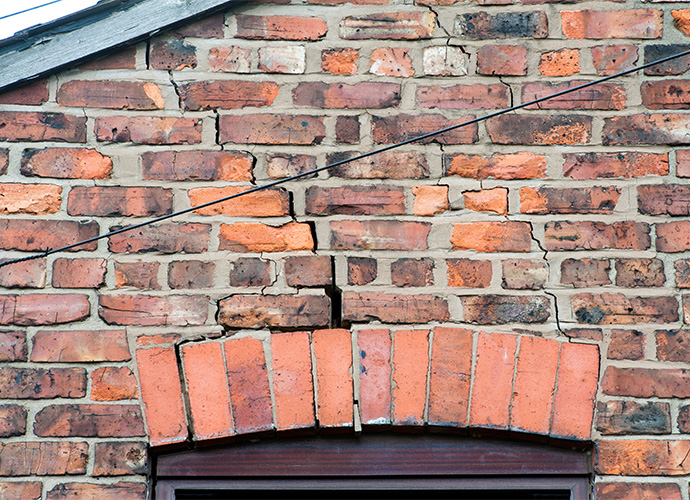When dealing with property, the term ‘subsidence’ can strike fear into the hearts of homeowners and prospective buyers alike. However, it’s not all doom and gloom; understanding subsidence, its causes, and solutions, can take the sting out of this seemingly menacing issue. Let’s dive into the nitty-gritty of subsidence and explore the ways to navigate it when selling a property.

What is Subsidence?
Subsidence refers to the gradual caving in or sinking of an area of land, which in turn can affect any structures situated on that land, such as houses or commercial buildings. This typically occurs when the ground beneath a property collapses, or when soil is compressed, causing the foundations of a building to descend or distort. As a result, noticeable cracks may appear in the walls, floors, and around windows and doors.
The Causes of Subsidence
Different factors contribute to subsidence, some natural, others human-induced.
- Clay soil: The UK has extensive areas of clay soil, particularly in the South East. Clay is prone to shrinkage during dry weather and expansion when it’s wet. This fluctuation in volume can lead to ground movement, resulting in subsidence.
- Tree and plant roots: Large trees and shrubs near a property can contribute to subsidence. Their roots can drain the soil of moisture, leading to soil shrinkage and ground movement.
- Leaking drains and water mains: These can wash away or soften the soil beneath the foundations of a property, causing it to subside.
- Coal mining: Areas with a history of coal mining, such as parts of the Midlands and the North, can experience subsidence due to the collapse of old mine shafts and workings.
Addressing the Issue of Subsidence
Subsidence may seem a daunting problem, but it can be managed effectively. If you spot signs of subsidence in your property, it’s important to act swiftly.
A chartered surveyor can assess the situation and suggest a course of action. This might involve underpinning (strengthening the property’s foundations), removing nearby trees or fixing leaking pipes.
Remember that most buildings insurance policies cover subsidence, but you need to check the terms and conditions carefully. Some insurance companies require an excess for subsidence claims, and this can be significantly higher than standard policy excesses.
Selling a Property with Subsidence
Selling a property with known subsidence is a bit trickier than a regular sale, but it’s by no means impossible. Here’s a brief guide to handling it:
- Transparency: Be upfront with potential buyers about the subsidence issue. Dishonesty can lead to legal complications further down the line.
- Provide documentation: Supply potential buyers with any documentation related to the subsidence, such as surveyor’s reports, details of repairs, and insurance claims.
- Price fairly: Be prepared to negotiate the selling price. Properties with known subsidence often sell for less than similar properties without such issues.
Dealing with subsidence can be challenging, but with expert help, you can manage and mitigate the impact. If you’re currently facing a subsidence issue or looking to sell a property with subsidence, our team of experienced estate agents are here to guide you every step of the way. Get in touch with us today and let us make your property journey less stressful and more successful.






